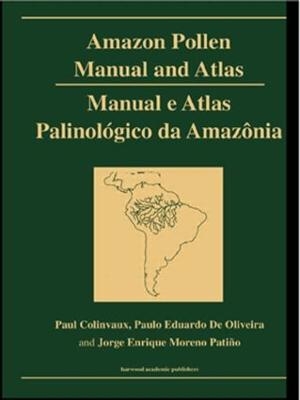
Amazon: Pollen Manual and Atlas
Taylor & Francis Ltd (Verlag)
978-90-5702-587-7 (ISBN)
Paul Colinvaux is the author of three ecology texts, the latest being Ecology 2 (Wiley, 1993); a book of essays, Why Big Fierce Animals Are Rare (Princeton University Press, 1978); and The Fates of Nations: A Biological Theory of History (Simon & Schuster, 1980). These books have been translated into several languages. Colinvaux’s research, in arctic regions as well as the tropics, has been to discover how the climate of Ice Ages controlled the distribution and abundance of life of the contemporary Earth. He has led numerous field parties to core lakes for environmental histories in an equatorial “slice” of the New World tropics, from the Galapagos Islands eastward to mainland Ecuador, across the high Andes to Oriente Province, and thence across Amazonian Brazil. Colinvaux’s equatorial research was begun when he was a professor at Ohio State University, but was transferred in 1991 to the Smithsonian Tropical Research Institute in the Republic of Panama, where this pollen manual was written. In 1998 the research base was transferred to the Marine Biological Laboratory in Woods Hole, Massachusetts. Paulo Eduardo De Oliveira is a research associate at the Field Museum of Natural History in Chicago and a visiting professor at the University of São Paulo. As a paleoecologist, he uses both diatoms and pollen from lake sediments in his reconstruction of the Ice-Age climates and vegetation of Brazil. He and Colinvaux have worked together since the late 1980s, first in Ecuador, then in Brazil. De Oliveira earned a doctorate from Ohio State University in 1992 for a pioneering thesis on the climatic history of southeastern Brazil. Jorge Enrique Moreno Patiño is a palynologist at the Smithsonian Tropical Research Institute in Panama. He is co-author (with D.Roubick) of a pollen atlas for Barro Colorado Island, the Panamanian reserve for research in tropical forests. Anyone wishing to contact Paul Colinvaux may do so at: Marine Biological Laboratory, 7 MBL Street, Woods Hole, MA 02543, USA; e-mail: pcolinva@mbl.edu. Paulo Eduardo De Oliveira may be reached at: Field Museum of Natural History, Roosevelt Road at Lake Shore Drive, Chicago, IL 60605, USA; or Universidade de São Paulo, Caixa Postal 11340, São Paulo, SP 05422, Brasil; e-mail: pedeoliv@usp.br.
PART I - POLLEN MANUAL Preface/Prefacio 1. Neotropical Pollen Analysis 2. Review of Amazon Paleoecology: The 1997 NWO/Huygens Lecture 3. A Guide to Piston Coring of Lake Sediments 4. Laboratory Protocols 5. Pollen Morphology 6. Appendix of Sources 7. Analise Palinologica Neotropical 8. Revisao da Paleoecologica da Amazonia: A Aula de NWO/Huygens 9. Guia para Amostragem, com Pistao, de Sedimentos Lacustres 10. Metodologia Palinologica: Protocolo e Materiais 11. Morfologia de
| Erscheint lt. Verlag | 1.12.1999 |
|---|---|
| Verlagsort | London |
| Sprache | englisch |
| Maße | 210 x 280 mm |
| Gewicht | 1100 g |
| Themenwelt | Naturwissenschaften ► Biologie ► Botanik |
| Naturwissenschaften ► Geowissenschaften ► Mineralogie / Paläontologie | |
| ISBN-10 | 90-5702-587-6 / 9057025876 |
| ISBN-13 | 978-90-5702-587-7 / 9789057025877 |
| Zustand | Neuware |
| Haben Sie eine Frage zum Produkt? |
aus dem Bereich


